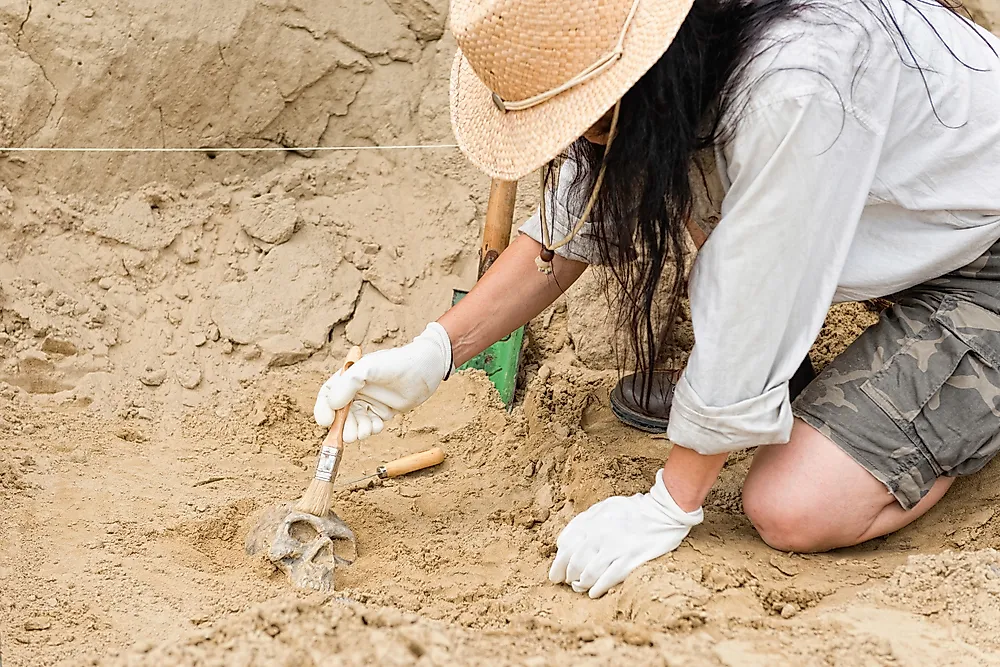Archaeology serves as a vital conduit through which one may explore and interpret the myriad complexities of human existence. This discipline is not merely a pursuit of artifacts and remnants of bygone societies; rather, it is an intricate endeavor that elucidates the cultural tapestries woven by those who came before us. By examining the diverse roles and methodologies employed by archaeologists, one can better appreciate the depth of their work and the profound implications it carries for understanding our shared humanity.
At its core, archaeology entails the systematic study of human activity through the recovery and analysis of material remains. This involves a meticulous process of excavation and conservation, often requiring advanced methodologies apt for preserving fragile artifacts. The archaeologist’s toolkit is replete with finely-tuned instruments and techniques, ranging from ground-penetrating radar to stratigraphic excavation, each tailored to uncover the hidden narratives embedded in layers of earth.
However, the fascination with archaeology extends beyond the mere unearthing of objects. As archaeologists delve into the past, they are engaged in a form of cultural relativism, which mandates that societies be understood on their own terms. This perspective is crucial as it allows archaeologists to impartially interpret artifacts within the context of the culture that produced them. This involves wrestling with the inherent biases that may influence contemporary interpretations, thereby providing a more nuanced understanding of human behavior through time.
In many ways, the fascination surrounding archaeology is rooted in the allure of the unknown. The remnants of ancient civilizations captivate the imaginations of both academic scholars and the general public alike. Questions abound: Who lived here? How did they interact with their environment? What beliefs motivated their rituals? Each excavation becomes both a literal and figurative dig into these profound questions. The archaeologist stands as a mediator between the past and the present, sculpting narratives that offer insights not only into ancient lives but also into the continuities and divergences within human cultures.
Moreover, the role of the archaeologist is not limited to individual site analysis. Archaeologists frequently engage in interdisciplinary collaboration to enhance their findings, drawing from the fields of anthropology, history, environmental science, and even art history. This amalgamation of disciplines fosters a more comprehensive understanding of ancient societies. For instance, a study of ancient agricultural practices may not only involve digging for tools in the field but also require the analysis of pollen samples to assess past climate conditions that influenced those practices. Such synergies underscore the complexity of human interactions with their environment.
Archaeologists also grapple with ethical considerations that arise from their investigations. The very act of excavation may invoke questions about ownership, stewardship, and representation. As social custodians of the past, archaeologists must navigate the delicate balance between academic inquiry and the respects owed to descendant communities. The principle of community archaeology has emerged as a response to these ethical dilemmas, emphasizing the importance of involving local populations in the research process. This approach not only honors the heritage of living communities but also enriches archaeological interpretations through indigenous knowledge and perspectives.
Furthermore, the global interconnectedness of contemporary society encourages a comparative understanding of cultural practices across geographical boundaries. As globalization permeates cultural exchanges, interdisciplinary approaches in archaeology shed light on how ancient societies adapted, influenced, and were influenced by one another. The study of trade networks, migration patterns, and cultural diffusion presents a compelling narrative that links disparate peoples through a shared history of invention and adaptation.
Indeed, the quest of archaeology is not simply to catalog the tangible aspects of culture but also to delve into the intangible—beliefs, customs, and sociopolitical structures that shaped human existence. By employing frameworks such as cultural relativism, archaeologists confront their own biases while striving to understand ancient societies from their unique contextual vantage points. This intellectual endeavor challenges contemporary scholars to reflect critically upon their own cultural paradigms and assumptions.
As those engaged in archaeology seek to decipher the echoes of the past, they provide insights into the human condition that resonate across time. The relentless pursuit of knowledge about previous civilizations allows us to learn from past mistakes, celebrate enduring achievements, and grasp the multifaceted nature of cultural identity. In this endeavor, archaeology transcends its disciplinary boundaries, offering a lens through which we can better comprehend the evolution of societies and the enduring complexities of cultural identity.
In conclusion, the archaeologist’s role extends far beyond excavation. It is an intricate dance between discovery, analysis, and ethical responsibility, grounded in a profound respect for the varied tapestry of human experience. Through cultural relativism, the narratives unearthed may offer invaluable lessons, reminding us of both our shared history and our ongoing challenges in understanding the diverse expressions of humanity. As we look to the past through the eyes of those who dedicated their careers to this fascinating field, we find not only artifacts but also the essence of what it means to be human.
